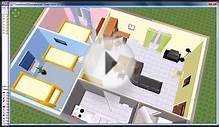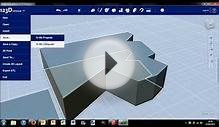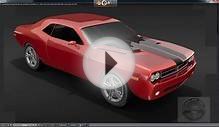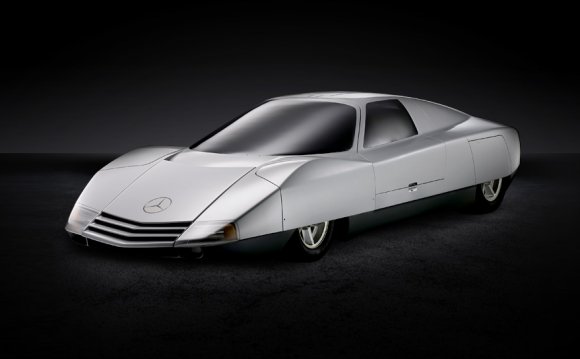
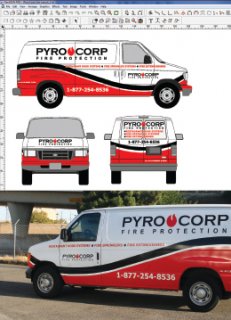 One of the cool things about offering vehicle wraps is that there is a lot of helpful software, tools and art available on the market. Software choices will be influenced by a raster vs. vector approach to wrap design.
One of the cool things about offering vehicle wraps is that there is a lot of helpful software, tools and art available on the market. Software choices will be influenced by a raster vs. vector approach to wrap design.
Besides the software that you build your design in, there are other helpful tools. Be sure to check out vehicle template software and ready-made art as well.
This vehicle wasn’t available for us to measure and photograph when we began the design process so we used a template from Art Station Vehicle Templates to start the initial layouts. Prior to final output we did fit the graphics to the photos of the vehicle to double check placement.
Design Process
We’re talking about the actual software used to design vehicle wraps, but I think it’s important to back up and talk a little about the design process and a few important design tips to keep in mind when designing wraps. Understanding these tips will help in choosing the software you’ll use.
In this article I’m talking about wraps for businesses. Wraps for personal vehicles are typically geared toward enhancement and can vary from simple to wild. Personal wraps have different design rules than wraps for businesses.
Personally, I think there should be three words kept in mind on all business wrap designs—simplicity, enhancement and effectiveness. If you can step back from your design and it fits these three then you should be on the right track.
Simplicity in the design process is the “less is more” approach. When a vehicle is driving down the road there is a limited amount of time that the message can be read. Therefore the message can’t be lost in an overdone design. Be very careful how much information you include, how many colors are used, and ask yourself if a photograph is necessary.
By enhancement, I’m not really talking about how the design enhances the vehicle, like with personal wraps, but rather does the design enhance or improve upon the company’s overall image or brand? Is the wrap reinforcing the company brand and creating a consistent message?
Simplicity and enhancement directly influence the effectiveness of the wrap. If a customer is going to spend thousands of dollars having their vehicle wrapped, then as an advertising tool, the wrap needs to earn them back their money ten-fold. To be effective, the wrap should clearly communicate who the company is, what they do and how to contact them.
For this wrap, the company wanted the focus to be on the employees who make up their company. We were provided with a layered Photoshop file containing all the images that we fit to scaled photos of the van. With the image heavy artwork and minimal text, Photoshop was the best program to design in.
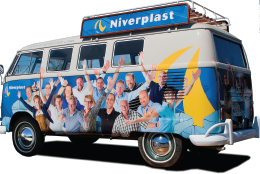 Software
Software
As long as you’re creating an effective wrap design, there is no one right software to use. Whether you use Adobe Photoshop, Adobe Illustrator, CorelDRAW, FlexiSIGN Pro, or some other design software, it really comes down to personal preference.
Often what influences the software you use is classes you took in school, a company you worked for or some other training that encouraged a particular software. For our company, we were early CASmate users and as our company grew and we added in full color printers, we transitioned to FlexiSIGN Pro.
For some people with graphic design training through college or tech school, Adobe products may have been taught. This would typically translate to Adobe Illustrator and Adobe Photoshop.
We use a combination of FlexiSIGN Pro and Photoshop with minimal Illustrator. For others, CorelDRAW is what they’ve been taught. It doesn’t really matter what combination of software you use, the results are what is important.
Vector Vs. Raster
Designing your wraps as all vectorbased designs is a great way to keep to the simple and effective rules. That’s not to say that you couldn’t achieve simple and effective designs with raster based software, but you should know the difference so you can determine the best approach.
Vector based programs often incorporate effects that imitate raster based designs, but for simplicity sake let’s just look at what vector is and what this means to designing a wrap.
Vector based designs are made up of points connected with lines and curves. The files are smaller in size than raster-based designs and are easier to work with from a memory and output standpoint. Vector artwork can also be scaled to any size without losing quality.
One other consideration is that if you’re designing a logo for a company, in addition to the wrap, you should always start the logo design in a vector format. A company should have their logo in a vector format for ease of use across multiple advertising needs. If the design is kept simple then building the rest of the wrap design around the vector logo is easy.
Raster images can still be effective, you just need to keep in mind the difference. Let’s say you designed a vector logo, but want to drop in some elements that either include a photo or are color heavy. You can export the vector image as an .eps file and bring it into a raster based program like Adobe Photoshop to add in your design elements.
Be sure that you bring in that initial file at a high resolution. You want to be sure that all design elements you add to the image from the onset are done at a high enough resolution to fit the side of a vehicle.
A raster based image is made up of pixels, or little dots. If you do all your designing at a lower resolution and then blow that artwork up to size, those pixels increase in size or more pixels are added, which typically results in pixelated, or boxy-looking, artwork.
Since you have to work with higher resolution files to maintain clean artwork, your files sizes will be larger. Larger files take more memory and will be slower to work with than vector artwork.
On wraps there is an easy way to use both raster and vector images most effectively. For example, the DKI Restoration wraps we did incorporated a photo collage provided by corporate with solid color lettering on the logo.
In this case we brought in high-resolution raster files of the photo images into a vector based program where we did all of our vector lettering. Everything was designed and scaled in FlexiSIGN Pro then and then exported straight out of FlexiSIGN Pro as an .eps and sent to print. In this way we kept the perfect clean lines of the vector lettering, while still incorporating the raster-based image.
For these wraps, we incorporated both a photo and text. To maintain the clean lines of the text and line art we designed the vector artwork in FlexiSIGN Pro and then imported high-resolution images.
Templates
I mention templates a lot in my wrap articles because they are very handy in the wrap design process. You may prefer ArtStation, ProVehicle Outlines, The Bad Wrap or some other template program. Do a little checking with each company and compare how many makes and models they offer, the presentation elements and sizing tools.
We design our wraps on the customer’s actual vehicle as much as possible. Sometimes this isn’t an option for some reason. Usually it’s because the customer wants to get started on the wrap design process and knows the make and model of the vehicle, but isn’t in possession of the vehicle yet. In this case we’ll start designing on a template and then fit the artwork to the scaled vehicle photos prior to output.
RELATED VIDEO
